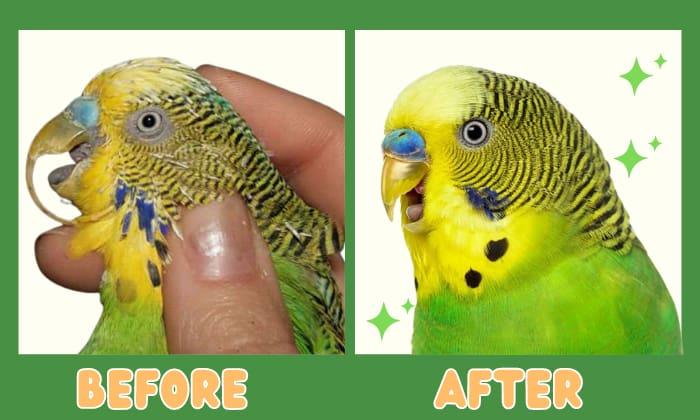Are you looking to beautify your bird items but concerned about what types of paint are safe for birds? Look no further! I’ve done the research for you and compiled everything you need to know about safe paint for our feathered friends.
1) Why Using Bird-Safe Paint is Important
Using the right type of paint for items used by birds is crucial. We want to enhance our bird items without causing any harm. Here are three reasons why using safe paint for birds is important:
(a) Pet Birds Can Scratch Out Paint
If you’re painting an item for your pet bird, remember that they may easily scratch out the paint. For example, if you paint a bird cage, your bird may perch, climb, or even bite off some of the paint on the bars. Over time, the paint may also fall off due to wear and tear. Therefore, it’s essential to use non-toxic paint for items used by your pet birds.
(b) Bird Baths, Birdhouses, and Bird Feeders are Subjected to the Outdoor Elements
If you’re planning to paint a bird bath, birdhouse, or bird feeder, keep in mind that these items will be exposed to various weather conditions, including rain, shine, and snow. In hot and humid climates, the paint may also change over time. To ensure durability, choose paints that are non-toxic, UV-resistant, and water-resistant.
(c) Paint is Subjected to Repeated Avian Usage
Whether you’re painting an item for your pet bird or for wild birds in your backyard, it will be used frequently. Birds tend to leave behind feathers, dirt, food, and other debris. To prevent the paint from wearing out easily, it’s important to use paint that can be easily sealed by a sealant. This will protect the paint against dirt and chemicals, ensuring its longevity.
2) Is Paint Bad for Birds?
No, paint is not bad for birds as long as you use non-toxic paints like oil-based, latex, acrylic, or water-based paints. Paints without volatile organic compounds (VOCs), lead, chromate, and zinc are safe for birds. Painting bird items such as cages, bird baths, and birdhouses can make them more attractive and pleasant.
3) Safe Paint for Birds (An Introduction to Different Paints)
When it comes to safe paints for birds, there are several types to consider. Here’s a summary:
| Paint Type | Properties |
|---|---|
| Oil-based | More resistant to low temperatures than latex paint, smooth application, less pre-paint cleanup, covers imperfections |
| Latex | Cheaper, fast cleanup, fewer dangerous fumes, requires fewer coats |
| Acrylic | Greater elasticity, good expansion and contraction at different temperatures, durable, highest resistance to sun damage |
| Water-based | Decently resistant, easy application, dries faster, easy post-paint cleanup |
| ECOS Paint | Easy application, hard, washable, durable film, suitable for metal and wood, completely non-toxic |
Different types of paint are suitable for different bird items based on the level of contact birds have with each item. Consider the cost and maintenance requirements when selecting the paint. For more detailed explanations, read on!
4) Safe Paint for Birdhouses
If you’re wondering what kind of paint is safe for birdhouses, you’ve come to the right place! Oil-based, latex, acrylic, or watercolor paints are safe to use. However, avoid painting the entrance holes, ventilation holes, and insides of the birdhouse to prevent birds from accidentally consuming the paint. Birdhouses should be painted with camouflage-colored paint to blend into the natural environment and protect birds from predators.
5) Safe Paint for Bird Baths
When painting bird baths, use oil-based, latex, or acrylic exterior paint. Latex and acrylic paints are safe for the inside of the basin, while oil-based paint is suitable for other parts of the bird bath. To ensure water resistance, seal the paint with a non-toxic waterproof sealant. Opt for bright colors to attract birds, such as red for hummingbirds, orange for orioles, blue for bluejays, and yellow for goldfinches.
6) Safe Sealants for Bird Baths
To protect the paint on bird baths, it’s essential to seal it with a non-toxic sealant. Polyurethane sealers are safe for bird baths, as well as sealants from Gorilla, Flex Seal, Krylon, and Rust-Oleum. Make sure the sealant is fully cured before allowing birds to use the bird bath.
7) Safe Paint for Bird Cages
Bird cages require special care when painting. Use water-based paints that are free of lead, zinc, chromate, and VOCs. The paint should bond well to metal and dry quickly. Non-toxic spray paint can also be used, but it must be allowed to dry for about one week after three coats of paint.
8) Safe Paint for Bird Feeders
Bird feeders should be painted with oil-based, latex, acrylic, or watercolor paints. Avoid painting the interior surfaces as birds may scratch off and consume the paint. Choose bright and primary colors to attract birds. Remember, bird feeders are where birds feed directly from, so avoid any potential ingestion of toxic materials.
9) Safe Paint for Different Materials
If you’re painting bird items made of different materials, consider these safe paint options:
- Concrete: Clean with a wire brush before applying oil, acrylic, or enamel paint.
- Wood: Use exterior latex or acrylic paint.
- Metal: Choose water-based paint that bonds well to metal.
10) Safe Spray Paint for Birds
To safely spray paint bird baths, use oil-based, latex, or acrylic paint. However, only latex and acrylic paint should be sprayed on the inside of the basin, not oil-based paint. After painting, apply a non-toxic sealer for additional protection.
11) How Long After Painting is it Safe for Birds?
After painting, it generally takes about one week for the paint to be fully safe for birds. Paints without VOCs may take a shorter time of 2 to 4 days to fully cure.
12) Is Behr Paint Safe for Birds?
Behr paint is safe for birds if it contains low or no VOCs. Ensure that the paint you choose for bird baths is free of VOCs.
13) Can Paint Fumes Kill a Bird?
Paint fumes are not likely to kill a bird, especially if you use modern interior paints without VOCs. After painting, allow the fumes to dissipate.
14) Is Polyurethane Safe for Birds?
Polyurethane is safe for birds as a waterproof sealant. It is non-toxic, eco-friendly, and harmless to birds, plants, and other animals. Choose a polyurethane sealer that is suitable for your specific project.
15) Final Thoughts
Now that you have all the information you need about safe paint for birds, you can confidently start your painting project. Remember to choose non-toxic paints, consider the specific requirements for each bird item, and seal the paint with a non-toxic sealant. Happy birding and may your paint job bring joy to our feathered friends!


